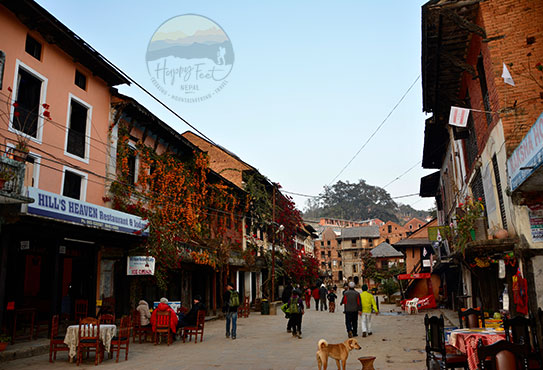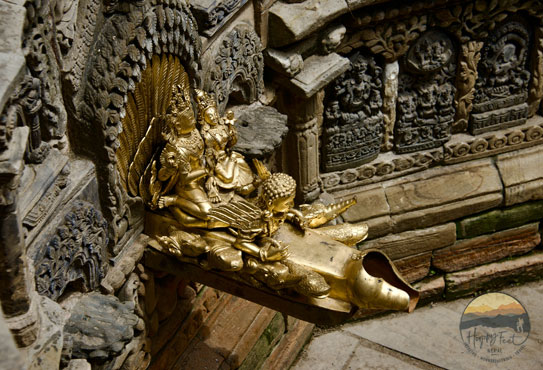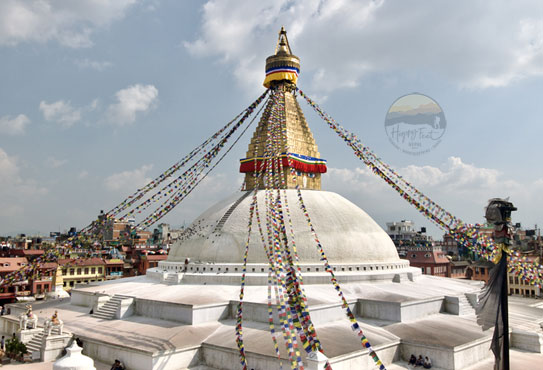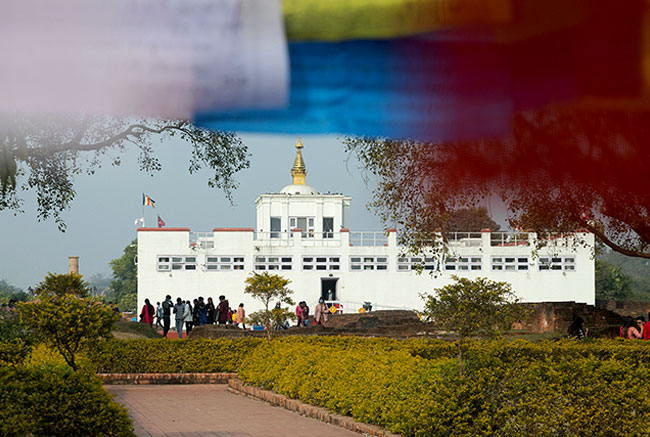-
Sunday - Friday: 9 AM - 4 PM
Kathmandu valley tour
Sherpa Guided tour of the medieval villages of Kathmandu Valley and its scenic and sacred valley rim, including Namo Buddha and seven World Heritage Sites and Panoramic Flight to see the Himalayas.
Trip Highlight:
Guided Tour of Kathmandu Valley, visiting seven World Heritage Sites by UNESCO. Visit Nagarkot and Dhulikhel, the famous lookouts on the outskirts of Kathmandu Valley. Visit Namo Buddha, where Buddha offered his own body for food to the tigress. Fly over Mount Everest, the tallest mountain on the globe.
Tour profile:
The valley of Kathmandu was once a huge lake whose waters, according to tradition, were drained with a mighty slash of his sword by Manjushree (the patron god of the Kathmandu Valley). The valley thus became suitable for human settlement. It now contains Nepal’s capital city and is the country’s commercial hub. Still, it retains much of its ancient glory: magnificent temples, old palaces and other monuments.
Arrive in Kathmandu, customs and immigration formalities and claim your baggage, which takes some time. Upon exiting, the arrivals get a traditional welcome from the Happy Feet Nepal representative and transfer to the hotel. Reach the hotel and the rest of the day is free with the possibility of optional excursions (not included), but you can ask to organise any tours or stroll through its vibrant streets.
Kathmandu, the capital and heart of the country with three medieval cities, symbolises Nepal’s everything. Having lived through the several ruling dynasties of Buddhists and Hindus, the culture and society of Kathmandu Valley have evolved through time to give it more than a unique feature. Today it is an urban city, and still rapidly increasing, that has its ancient myths and, at the same time, is testimony to the greatness of people who have lived there for time immemorial.
Accommodation in Hotel Shanker, a 4-star hotel.
Breakfast at the hotel and drive to Daktsin Kali Temple. The trip to the temple takes about 1 hour by car. The road runs through the famous Chobar Gorge, offering magnificent views over the Kathmandu Valley. Chobar Gorge is where the entire water of Kathmandu Valley exits, initially cut by Buddhist Master Manjushree, with his mighty sword, to spell the water that initially filled the Kathmandu Valley. Here we visit an ancient temple and continue the drive, Daktsin Kali. Dakshin Kali temple should see each Tuesday or Saturday because these days take the place of the sacrifice of an animal in honour of Kali. Next, we will visit the ancient Sanctuary dedicated to the God Shesha Narayan, the sacred cave of Guru Rinpoche and several Buddhist monasteries.
In the afternoon, we drive to Kirtipur, an ancient Newari town with various ancient Buddhist temples and excellent views of the Kathmandu valley. Kirtipur was an ancient independent Kingdom. Due to the strategic location, at the entrance to Kathmandu Valley, they got to fight several times with the Soldiers of Prithvi Narayan Shah, and their defeat led Prithvi Narayan Sha to unify current Nepal.
Accommodation in Hotel Shanker, a 4-star hotel, breakfast included.
Breakfast at the hotel and drive to Pashupatinath Temple. A Hindu pagoda temple with gilt roofs carved with silver doors dedicated to Lord Shiva, situated at the bank of the holy Bagmati River and regarded as among the most sacred temples of the Hindu religion, Pashupatinath is the focus of pilgrimages culminating in the day of Shiva Ratri (the marriage anniversary of Lord Shiva and the goddess Parvati). Pashupati is also the cremation ground in the ghats (cremation group) along the bank of River Bagmati, where the recently deceased Hindus of the Valley are cremated.
Then we take a 13-kilometres drive to Bhaktapur, east of Kathmandu. Its original name is Bhadgaon, or the village of Devotees, one of Kathmandu Valley’s living museums. Bhaktapur is filled with the 55-windowed Royal Palace, the Palace of the Kumari, the temple of Taleju, the temple of Pashupati, the main square of Taumadhi Tole, Nyatapola Temple (the most imposing the tallest such architecture in all of Nepal), the temple of Akash Bhairab (the second most important temple of Bhadgaon), the Dha Hateya and the Square of the Potters. UNESCO recognises Bhaktapur as a World Heritage Site.
After the visit, we leave by road toward Nagarkot, at an altitude of 2,099m and 32km east of Kathmandu or 19 kilometres northeast of Bhaktapur. Nagarkot is one of the most beautiful hill resort areas to enjoy sunrises and Mountain Range views, from the Langtang to Everest.
Accommodation at the Club Himalaya, a 4-star hotel, breakfast included.
Early wake up and sunrise tour, return to the hotel for breakfast. After breakfast, we drive or take a lovely hike down, according to your choice, to the Changu Narayan Temple. It is the oldest temple in the entire region or perhaps the country. The temple is on top of a hill and surrounded by Newari settlements. It is dedicated to Vishnu and is considered amongst the oldest temples of Kathmandu valley, and its origin is said to be a Buddhist temple.
After Changunarayan, we drive to Dhulikhel. On the way, we will make a short stop in Banepa to visit the famous temple of the goddess Chandeswari, the only powerful deity of Banepa. The Chandeswari temple lies 1.1 kilometres northeast of the Banepa city centre. After the visit, transfer to Dhulikhel. It is a scenic hill resort area near Panauti. At one time, Dhulikhel prospered as a trade hub between Kathmandu and Tibet. Today, the city charms visitors with its cultural heritage and scenic views. Accommodation in Hotel Temple Tree, a 4-star hotel breakfast included.
Accommodation in Dwarika’s Himalayan Shangri-La Resort, breakfast included.
Breakfast at the hotel and hike to Namo Buddha. A trip to Namo Buddha is a way to see how Nepalese people in the villages live their daily lives in the incredibly steep terraced valleys. The fields are full of greenery, and the wind carries the smell of sun-heated herbs to Namo Buddha. During this short trip, we can feel that the beauty of nature embraces us, enjoying the views of the Himalayas to the northeastern horizon.
Namo Buddha, which means “greeting to Buddha”, is a sacred site that has been holy for thousands of years. Namo Buddha highlights the paranormal story of the former life of Buddha, who was touched by compassion at the pitiful sight of a tigress and her tiny cub, which leads him to offer his own body as food. The tragic story of the origin of Namo Buddha Stupa is related to the thirty-two reincarnations of Bodhisattva. The ancient name of the current Namo Buddha was GandamalaParvat. Arrive at Namo Buddha, check into a monastic lodge and have lunch. In the afternoon, visit the monasteries and the sacred site of the Namo Buddha stupa.
Accommodation in a monastic Lodge, basic accommodation, full board.
Breakfast at the Monastic Lodge. We then drive or hike down Panauti; both options are beautiful – inform your preference to the guide. Panauti lies at the confluence of two rivers, and the ancient name for the city was Panchal and Gunoltiavatipur. We visit several temples dedicated to several deities along the banks of the holy rivers. Thousands of pilgrims flock to Panauti for the Makar Mela, which occurs once every twelve years in honour of Lord Shiva—the city’s origin is linked to a Buddhist King Maharatha and his ancestors. Finalise with the tour and 34-kilometres drive to Kathmandu.
In the evening, we visit the Boudhanath, the largest Buddhist shrine in South Asia. This ancient Chorten was built in the 5th century A.D. by King Manadeva. Three terraces lead up through water, fire and air segments to the pinnacle, symbolic of space and the highest spiritual attainment. The whole is surrounded by a circle of shops which form a small Tibet. Lord Buddha’s four pairs of eyes flash vividly into the cardinal directions, radiating the message of Mahayana Buddhism, known as Lamaism in Sikkim, Ladakh, Bhutan and Tibet.
Accommodation in Hotel Shanker, a 4-star hotel, breakfast included.
Breakfast at the hotel. In the morning, visit Swayambhunath, dating back more than 25 centuries and one of the world’s oldest Buddhist chaityas. The great stupa of Swayambhunath is a landmark wonder of Nepal and is listed as a World Heritage Site. The all-seeing eyes of Lord Buddha keep an eternal watch over the valley.
Swayambhu is located west of Kathmandu proper on a hillock about 500 feet above the valley floor. The hill is a mosaic of small chaityas and pagodas—one Hinayana (Theravada) and five Mahayana (Vajrayana)—temples. The site offers a complete view of Kathmandu Valley, its surroundings, and the northeastern Himalayas.
In continuity, drive to Patan, one of the three medieval cities of Kathmandu Valley and one of the World Heritage sites among the seven World Heritage sites of Kathmandu Valley, located 7-kilometres southwest of Kathmandu. The city known as Lalitpur, the City of Arts, was a renowned Buddhist centre in Asia. It has four Ashoka-built Stupas and a multitude of miniature stupas, monasteries, viharas and temples. At Patan, we visit its Durbar Square, the Golden Temple, Thousand Buddha, and its museum, among other sites, which explain Buddhism and Hinduism in extensive labels within the living traditions and context.
In the afternoon, drive to Basantapur Durbar Square, also known as Kathmandu’s Durbar Square. The tour of the Kathmandu Durbar Square, classified as a World Heritage Site, teems with activity. It features countless monuments, including the House of the Living Goddess (Kumari Ghar), the ferocious Kal Bhairab and the kneeling Hanuman (the red-caped monkey god) statues.
The architecture represents some of the most outstanding achievements of the medieval Malla era. The stroll leads around the square past a host of pagoda temples (including the grand temple of the Goddess Taleju) and a window framing Shiva and Parbati sitting together viewing the scene.
The square is full of colourful life centred on the Kasthamandap rest-house. Said to have been built with wood from a single tree (and the origin of Kathmandu’s name), it is now reconstructed in the wake of the 2015 earthquake. Then visit the Temple of Kumari; the residential quarters of the Living Goddess called Kumari (‘chaste virgin’) consists of a traditional building complex featuring carved wooden balconies and windows.
Also impossible to overlook are the great bell and large drums. The palace’s main golden gate is guarded by the monkey god Hanuman, the faithful devotee of Lord Ramachandra, the hero of the epic Ramayana.
Finally, pass through the Hanuman Dhoka: the historic seat of the past Malla and Shah dynasties. The historic temples and palaces epitomise the religious and cultural lifestyle of the rulers. Among the most exciting things to view is the Taleju Temple, built by King Mahindra Malla in A.D. 1549 and a historical museum containing artefacts of past Shah kings.
We finalise with the tour and ride a rickshaw and roll through its old city market centre, the Ason Bazaar, seeing what the Nepalese people buy and sell in their daily run.
Accommodation in Hotel Shanker, a 4-star hotel, breakfast included.
Early in the morning, take a scenic mountain flight to enjoy the views and panorama of a 360-degree wide range of Himalayan peaks from Manaslu, Ganesh, Langtang, and Jugal Himal, Pumori, Lhotse, Nuptse, Mt. Everest and as far towards Mt. Makalu and Kanchenjunga towards far east. Most mountain flights operate early morning, from 6:30 a.m. to 9 a.m., with window seats that last an hour. You can observe a mighty chain of Himalayan peaks both ways on the flight, never missing the core and highlight of mountain flight. Get landed back at the airport and get escorted back to the hotel. The rest of the day is free on your own. The evening is for a farewell dinner at a local restaurant with a Nepali cultural dance show.
Accommodation in Hotel Shanker, a 4-star hotel, breakfast included.
Breakfast and the rest of the day are leisure on your own. The Representative of Happy Feet Nepal will arrive at your hotel with transport three hours before your departure flight time. Get escorted from the hotel to the International Departure Terminal, see off formalities, and go through the immigration and departure.
Breakfast included.
Nearly all months of the year except for the monsoon (mid-June to mid-September) are suitable. However, the best period is from March to May; most days remain clear, and hills are alive with wildflowers in full bloom, especially the rhododendron in its various colours (Nepal’s national flower).
September to December, the autumn and the beginning of winter is always the best time to visit Kathmandu or the whole country. Most days are fine, and skies are clear, offering breathtaking views of peaks, but with dwindling sunlight hours, when temperatures can drop to freezing.





